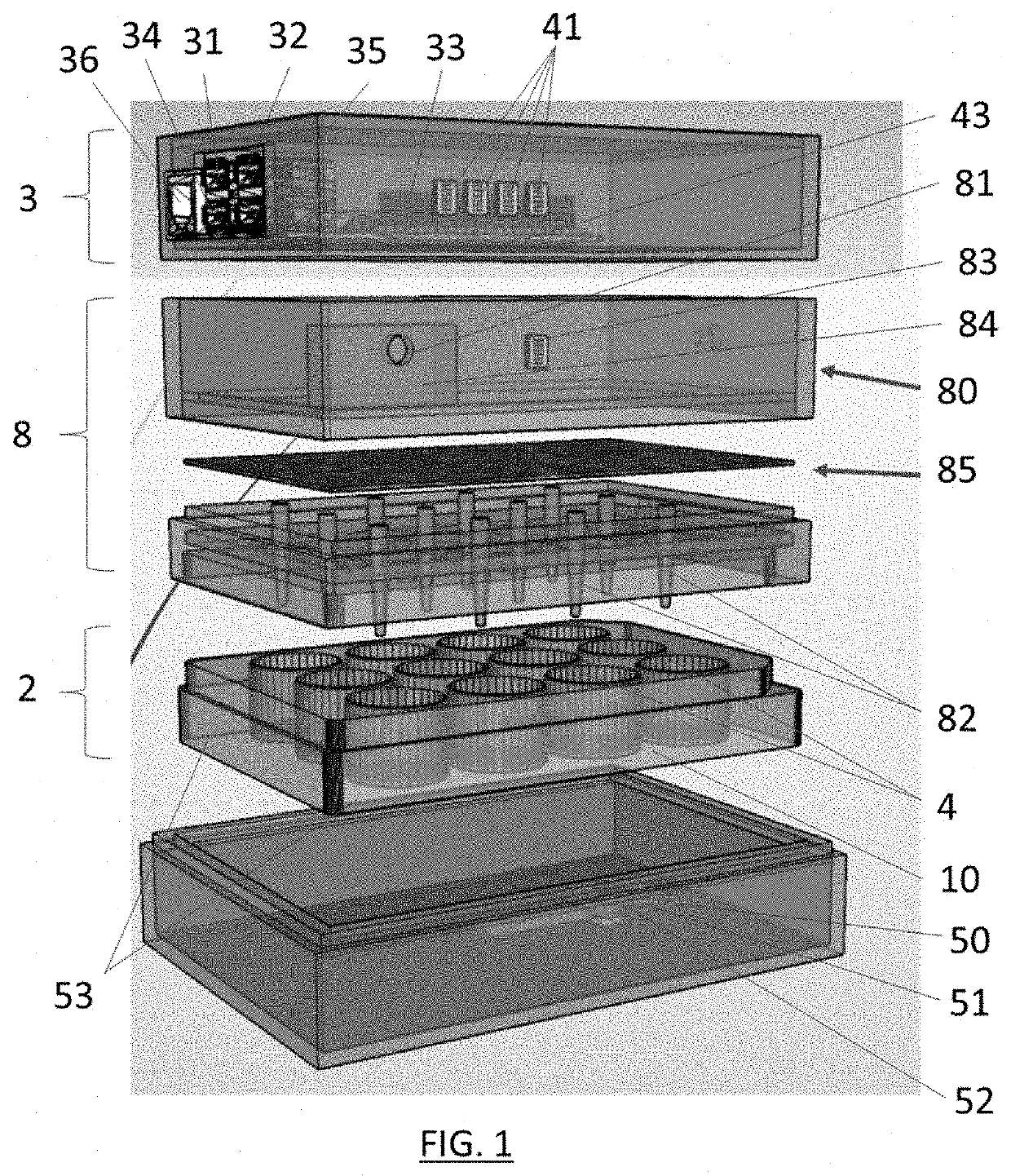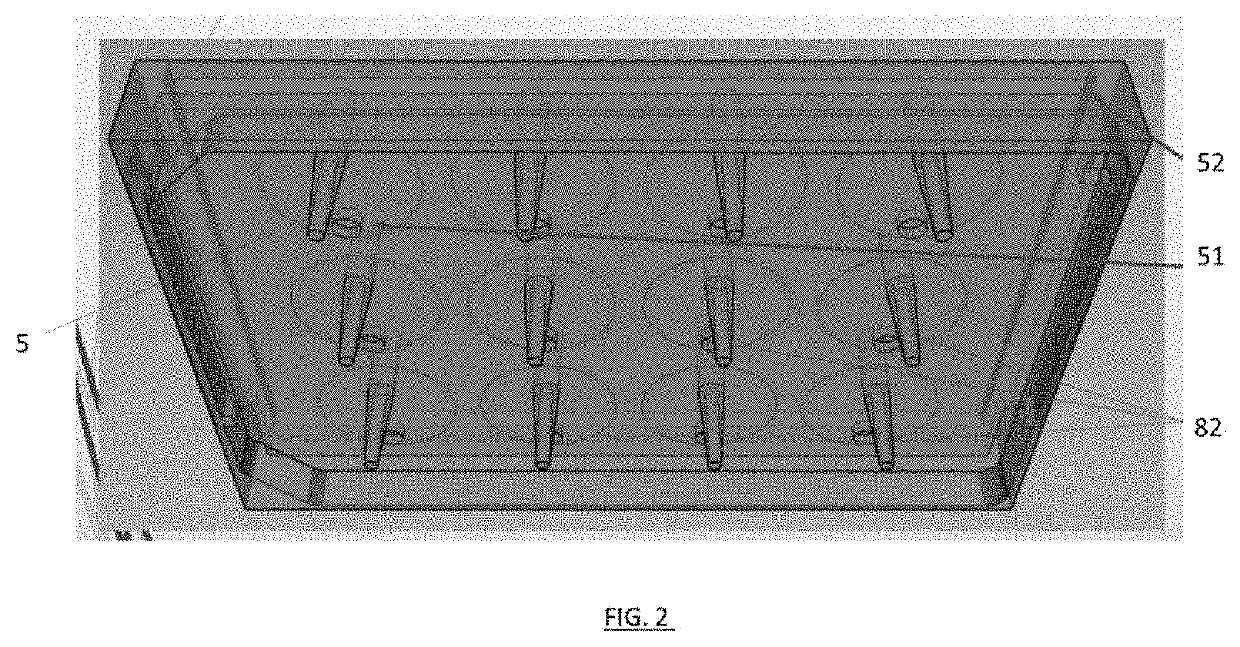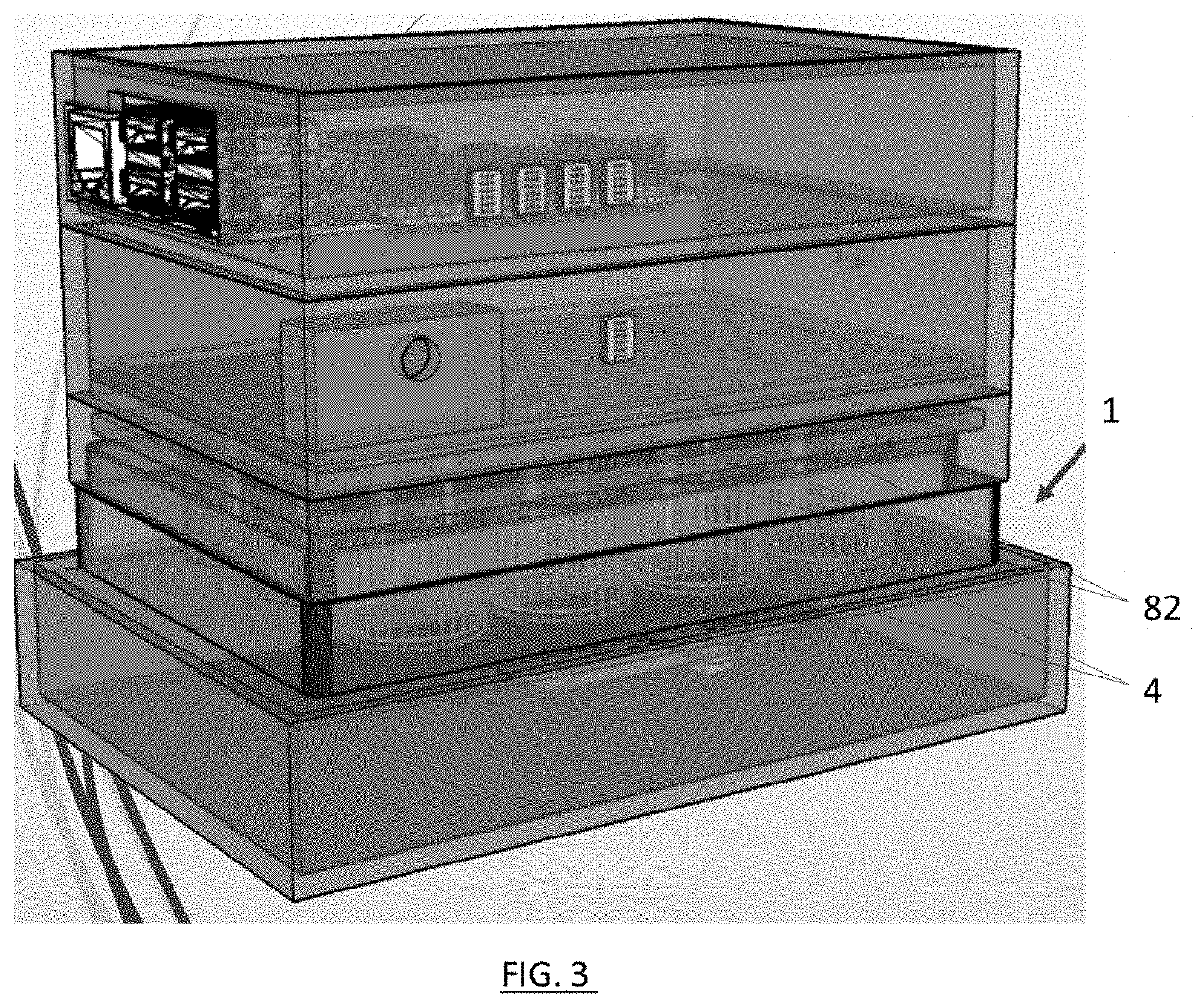Organoid culture system and method for sterilising an organoid culture system
- Summary
- Abstract
- Description
- Claims
- Application Information
AI Technical Summary
Benefits of technology
Problems solved by technology
Method used
Image
Examples
example 1
[0122]The culture module (2) is coupled / decoupled from the growth monitoring module (50) as shown in FIGS. 1 and 3.
example 2
[0123]The culture module (2) was sterilized as follows:[0124]1. Autoclaved in a STERIVAP 669-1 ED (BMT) autoclave at 134° C. for 7 minutes.[0125]2. 4 intensive drying phases of 3 minutes each.
example 3
[0126]The organoids were developed from two tumor cell lines previously obtained from primary RbloxP / loxP HRasV12 (T653) and cRb− / − HRasV12 (T731) astrocytes in SCID mice. These cells were cultured in DMEM (Dulbecco's Modified Eagle's Medium) supplemented with 10% fetal bovine serum (FBS) at 37° C. and 5% CO2.
[0127]To establish the neurosphere culture derived from the primary tumor culture, the T653 and T731 cells were washed in phosphate-buffered saline (PBS) solution, trypsinized and recovered by centrifugation in PBS at 1000 rpm for 5 minutes. The cells were resuspended in the DMEM / F-12, GlutaMAX nutrient mix supplemented with 1× B-27 (50×) and 0.02 μg / ml EGF (Human Epidermal Growth Factor) and 0.02 μg / ml bFGF (basic fibroblast growth factor) growth factors. The cells were seeded in 60 mm plates and cultured at 37° C. and 5% CO2.
[0128]The cells were kept in a humidified incubator for 48 h, and after this time they were recovered by centrifugation at 1000 rpm for 5 min, resuspende...
PUM
 Login to View More
Login to View More Abstract
Description
Claims
Application Information
 Login to View More
Login to View More - Generate Ideas
- Intellectual Property
- Life Sciences
- Materials
- Tech Scout
- Unparalleled Data Quality
- Higher Quality Content
- 60% Fewer Hallucinations
Browse by: Latest US Patents, China's latest patents, Technical Efficacy Thesaurus, Application Domain, Technology Topic, Popular Technical Reports.
© 2025 PatSnap. All rights reserved.Legal|Privacy policy|Modern Slavery Act Transparency Statement|Sitemap|About US| Contact US: help@patsnap.com



